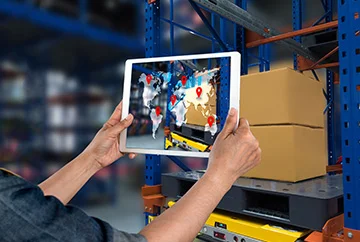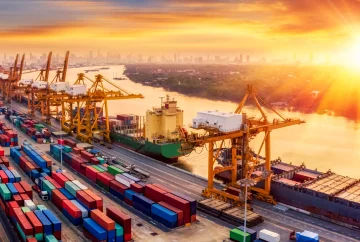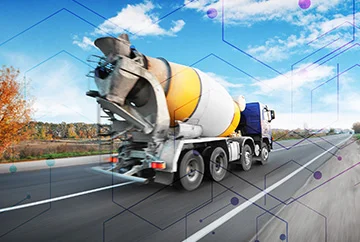When supply chain disruptions are predominant and a growing need to strengthen them, emerging technologies like artificial intelligence have been of utmost importance. From conjecturing to dispatch and managing deliveries, AI is powering up supply chain operations, improving its efficiency.
According to a Mckinsey report, the value of goods traded globally has tripled to more than $10 trillion annually since 2000. Companies worldwide are aspiring for a well-crafted lean AI model to manage inventory levels, reduce lead times and ensure all-time-in-full deliveries.
Today, we’ll look at eight such examples where artificial intelligence is helping modern organizations transform their supply chains at the speed of light.
Artificial Intelligence In Supply Chain
AI in Logistics and Transportation
Fleet management and optimization are the most underrated applications of AI in the supply chain. Fleet managers amplify the crucial connection between the consumer and the supplier. Therefore they are responsible for the unhindered flow of commerce.
Along with the increasing fuel costs and shortages in resources, fleet managers encounter data overload issues. If businesses do not collect data and process it, it quickly or adequately analyzes the collected data, and it will soon turn into an unproductive swamp.
AI intervenes in such a scenario to ensure efficiency across all activities. With the help of predictive analytics, it assesses truck turnaround time and ad-hoc demands of vehicles. Studies historical demand patterns and, with the help of statistical techniques, predict truck demand per shipping lane. Utilizes powerful multi-dimensional analytics to reduce unplanned downtime of the fleet, ramps up fuel efficiency, detect and remove bottlenecks.
Supplier Risk Assessments
Free up resources from the mundane and unproductive task of assessing supplier performance using AI-driven supplier risk management. Integrate intelligent solutions to get a 360-degree view of the vendors and complete insights into Vendor Performance factors.
Businesses and enterprises can build AI-based and ML-based models depending upon their risk assessment infrastructure. The model can extract deeper insights on real-time data from various sources (like social, news, media, etc.) round the clock across as many categories as you wish.
Using data science-based techniques, AI can run noise reduction, relevance-based normalization to provide actionable insights. Considering the most relevant and meaningful data from the vast pool of big data, it calculates a risk score/index for suppliers. These risk scores alert the organization of any potential supplier failures.
AI in Demand Forecasting and Inventory Management
According to a survey, 90% of the respondents believe that AI will transform the supply chain for the better by 2025. When applied to demand forecasting, AI & ML framework brings about accurate predictions on future demands.
For instance, predicting the decline and end of a product life precisely on the sales channel along with the market growth introducing a new product is easily achievable. Deep Learning deciphers both linear and non-linear dependencies to make demand forecasting more scientific and accurate.
Similarly, in supply chain forecasting, AI and ML ensure material bills and PO data are structured and accurate deductions are made on time. Field operators leverage these data to drive operations and maintain the threshold levels required to meet the current demand.
Maintaining optimum stock levels is one of the biggest challenges faced by supply chain organizations—AI and ML framework work towards maintaining the level while creating a revenue generation path for the businesses.

Use Cases of AI in Supply Chain Management
AI For Warehouse Automation
AI is one such technology that seamlessly integrates with other emerging technologies to modernize processes and better warehouse operations. Computer Vision helps in load & unload automation, reduces handling costs and damage by reducing individual handling.
AI systems will use historical data for optimization and spot opportunities for improved efficiency in inventory management and distribution. Using the data collected, AI would predict accurate demand and finally automate operations and workflows.
Mostly, it’s only a partial integration of AI, and human expertise would still be in demand to supervise and monitor the entire system, probably for error detection and application of preventive measures. If there are tons of data collected, then there’s a fair chance of developing a high-performing algorithm as well.
Higher cost savings and improved efficiencies are inevitable, especially if the integrated technology leads to higher performance.






